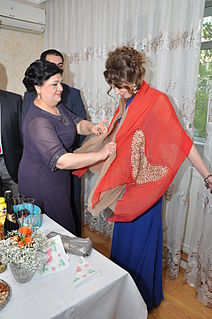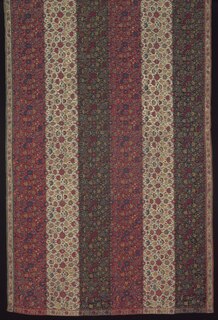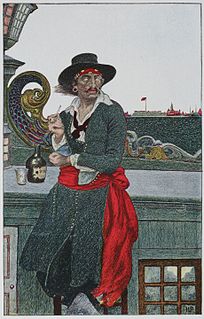 W
WA shawl is an Indian simple item of clothing, loosely worn over the shoulders, upper body and arms, and sometimes also over the head. It is usually a rectangular or square piece of cloth, which is often folded to make a triangle, but can also be triangular in shape. Other shapes include oblong shawls.
 W
WAn afghan is a woollen blanket or shawl, usually knitted or crocheted. It is sometimes also called a "throw" of indeterminate size. Afghans are often used as bedspreads, or as a decoration on the back of couches or chairs.
 W
WThe aguayo, or also quepina is a rectangular carrying cloth used in traditional communities in the Andes region of Argentina, Bolivia, Chile, Colombia, Ecuador and Peru. Aymara and Quechua people use it to carry small children or various other items in it on their backs. It is similar to a lliklla and sometimes regarded as a synonym.
 W
WAlasho is an indigenous Hausa long turban, worn across the head and neck. It is near identical in length, colour and dimensions to that of the Tuareg tagelmust, but is wrapped differently to the Tuareg method, leaving the sides of the head and some of the lower neck free. A similar style turban is worn by Songhai men, known as 'fatalaa' in Zarma.
 W
WAn Argon is a traditional shawl-like garment worn by Hajong women in the Indian subcontinent, in modern-day India and Bangladesh.
 W
WA fichu is a large, square kerchief worn by women to fill in the low neckline of a bodice.
 W
WThe fouta is a piece of thin patterned cotton or linen fabric of Tunisian origin used in many Mediterranean countries and Yemen. Among other uses, they were worn, by both men and women, wrapped around the body while at the public baths in 19th-century Syria. In Algeria, conservative women wore the fouta draped over their sarouel garment. Similarly, in some parts of southern Saudi Arabia, men would wear the fouta as a loincloth beneath their thawb robes, or just by itself while relaxing at home. Foutas are widely used today in the occidental world as Turkish bath towels or even beach towels.
 W
WThe term Galway shawl usually refers to a specific type of heavy weight shawl that was worn by Irish women during the colder seasons. It became popular during the late nineteenth century and was still being worn up until the 1950s by a few older, more traditional Irish women. Throughout Ireland, not just in Galway, women traditionally wore various types of lightweight shawls that were hand knit, crocheted, or woven; and would have been of solid color, plaid, print, or paisley. Lightweight shawls, worn directly over the blouse and tied or tucked in at the waist, were worn in all seasons both indoors and out. The Galway shawl was a winter-weight outer garment worn over the lightweight shawl.
 W
WThe għonnella, pronounced "awe-nel-la", sometimes referred to as a Faldetta, was a form of women's head dress and shawl, or hooded cloak, unique to the Mediterranean islands of Malta and Gozo. It originated, and has some similarities, to the Turkish charshaf, but distinguishly had a piece of cardboard sewn inside (hooded), at the top part above the head. There was a different blue version in the south-east of Malta, and it was referred to as xurqana. Another in the village of Għargħur was referred to as stamijna.
 W
WThe humeral veil is one of the liturgical vestments of the Roman Rite, also used in some Anglican and Lutheran churches. It consists of a piece of cloth about 2.75 m long and 90 cm wide draped over the shoulders and down the front, normally of silk or cloth of gold. At the ends there are sometimes pockets in the back for hands to go into so that the wearer can hold items without touching them with the hands.
 W
WJamawar, or grown piece, is a special type of shawl made in Kashmir."Jama" means robe and "war/var" is chest and metaphorically body. The best quality of Jamawar is built with Pashmina. The brocaded parts are woven in similar threads of silk or polyester. Most of the designs seen today are floral, with the kairy as the predominant motif. Historically handmade items, some shawls took a couple of decades to complete; consequently, original Jamawar shawls are highly valued. Modern, machine-made Jamawar prints, produced in cities such as Kashmir and other parts of Himachal Pradesh cost less to buy but handmade Jamawar are very expensive.
 W
WThe Kashmir shawl, the predecessor of the contemporary cashmere shawl, is a type of shawl identified by its distinctive Kashmiri weave, and for being made of fine shahtoosh or pashmina wool. Contemporary variants include the pashmina and shahtoosh shawls. In the late 20th century, they evolved to middle-class popularity through generic cashmere products, and raffal, shawls woven in the Kashmiri style, but using thicker Merino wool. Originally designed as a covering for men in India, it has evolved in the popular cultures of India, Europe, and the United States as indicators of nobility and rank, heirlooms giving on a girl's coming-of-age and marriage, and subsequently, as artistic elements in interior design.
 W
WKhes is a thin cotton blanket cloth of the Indian subcontinent; it is a damask cloth used for blankets and winter wraps. Khes is generally hand-woven with coarse cotton yarns. Khes as a garment is a simple clothing item to wear loosely to cover upper body parts by men in Punjab, India, and Pakistan. Khes was an important cloth of Indian Punjab, and also produced in Punjab, Pakistan. The Punjab region was famous for the production of khes and many coarse cotton textiles produced in the 19th and 20th centuries. Khes is a comfort object used in bedding, and also usable as a cover.
 W
WLitham is a mouth-veil which the Tuareg and other North African nomads, particularly men, have traditionally used to cover the lower part of their face.
 W
WA lliklla is a rectangular, handwoven shoulder cloth. It is worn by Quechua women of the Andes region in Bolivia and Peru. Traditionally it is fastened at the front using a decorated pin called tupu.
 W
WThe Manila shawl is an embroidered silk shawl derived from the Filipino pañuelo. They were manufactured in China and were popular in the Philippines, Latin America and Spain during the colonial era. It also became popular in European fashions in the 19th century. In modern times, it is still an aspect in various traditional clothing in Hispanic cultures, and is particularly prominent as part of the costume of flamenco dancers (bailaoras) and Gitana women.
 W
WPaisley shawls were a fashionable item of women's clothing in the 19th century made of intricately woven and delicate wool. Although known as the Paisley pattern, the teardrop motif originated in Persia and India, becoming popular in Europe—and synonymous with Paisley, Renfrewshire—in the 19th century.
 W
WThe pañuelo or alampay is a Filipino lace-like embroidered neck scarf or shawl worn around the shoulders over the camisa (blouse). They were square-shaped and were folded in half into a triangle when worn. Pañuelos are the direct predecessors of the Manila shawl.
 W
WPathin is a wrap-around skirt worn by the women of the Hajong tribe of the Indian subcontinent in Northeast India and Bangladesh. It covers the upper and lower part of the body from the bust till the calf of the leg. Women in the upper class wore a long pathin which would fall down to the floor while women in the lower class wore a shorter pathin whose length reaches to the ankle.
 W
WThe Pavlovo Posad shawl, Pavlovsky shawl or Povlovo Posad scarf is a traditional Russian garment and handicraft.
 W
WA sash is a large and usually colorful ribbon or band of material worn around the body, draping from one shoulder to the opposing hip, or else running around the waist. The sash around the waist may be worn in daily attire, but the sash from shoulder to hip is worn on ceremonial occasions only. Ceremonial sashes are also found in a V-shaped format, draping from both shoulders to the stomach like a large necklace.
 W
WThe scapular is a Western Christian garment suspended from the shoulders. There are two types of scapulars, the monastic and devotional scapular, although both forms may simply be referred to as "scapular". As an object of popular piety, it serves to remind the wearers of their commitment to live a Christian life.
 W
WShahtoosh is a fine type of wool made from the hair of the Tibetan antelope. It is also a metonym for a type of Kashmir shawl traditionally made of shahtoosh wool. The Shahtoosh shawl is now a banned item with possession and sale being illegal in most countries for the Chiru is an endangered species under CITES. However, the weaving of Shahtoosh shawls continues in secret in Kashmir due to high demand by western buyers. The estimated market value of one Shahtoosh shawl in the western market is around $5,000–$20,000. Shahtoosh is the world's finest wool having the lowest micron count, followed by vicuña.
 W
WThe stole is a liturgical vestment of various Christian denominations. It consists of a band of colored cloth, formerly usually of silk, about seven and a half to nine feet long and three to four inches wide, whose ends may be straight or may broaden out. The center of the stole is worn around the back of the neck and the two ends hang down parallel to each other in front, either attached to each other or hanging loose. The stole is almost always decorated in some way, usually with a cross or some other significant religious design. It is often decorated with contrasting galloons and fringe is usually applied to the ends of the stole following Numbers 15:38–39. A piece of white linen or lace may be stitched onto the back of the collar as a sweat guard, which can be replaced more cheaply than the stole itself.
 W
WThe tagelmust is an indigo-dyed cotton garment, with the appearance of both a veil and a turban. The cloth may exceed ten meters in length. It is mostly worn by Tuareg Berber men, the Hausa of the far northern Sahel region and the Songhai. In recent times, other colors have come into use, with the indigo veils saved for use on special occasions. It usually has many layers that cover the head, and it drapes down to loosely cover the neck. It is also worn by some French people as a scarf.
 W
WA tallit is a fringed garment, traditionally worn as a prayer shawl by religious Jews. The tallit has special twined and knotted fringes known as tzitzit attached to its four corners. The cloth part is known as the "beged" and is usually made from wool or cotton, although silk is sometimes used for a tallit gadol.
 W
WA tippet is a scarf-like narrow piece of clothing, worn over the shoulders. It may also be likened to a stole in the secular rather than ecclesiastic sense of this word. Tippets evolved in the fourteenth century from long sleeves and typically had one end hanging down to the knees. In later fashion, a tippet is often any scarf-like wrap, usually made of fur, such as the sixteenth-century zibellino or the fur-lined capelets worn in the mid-18th century.